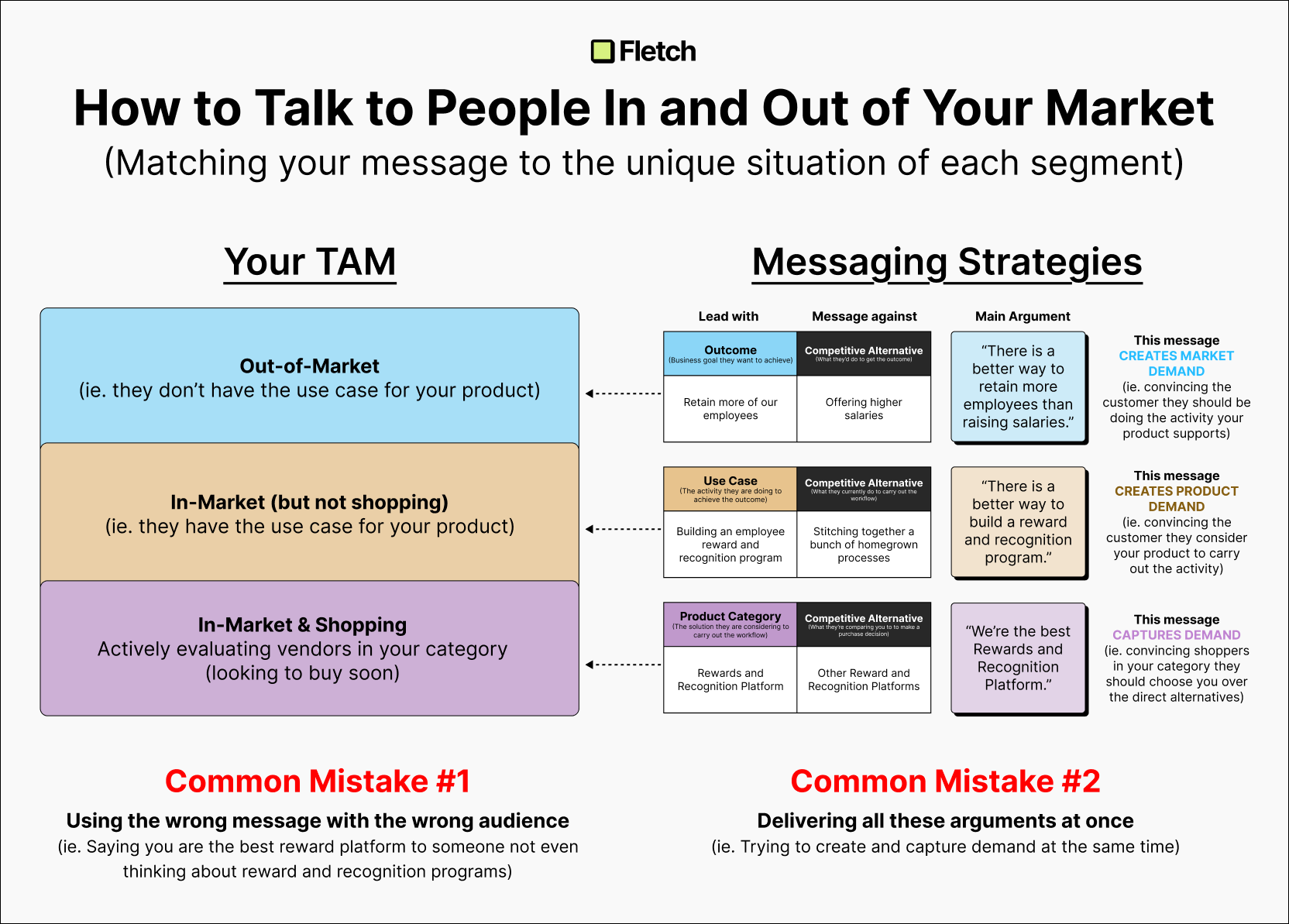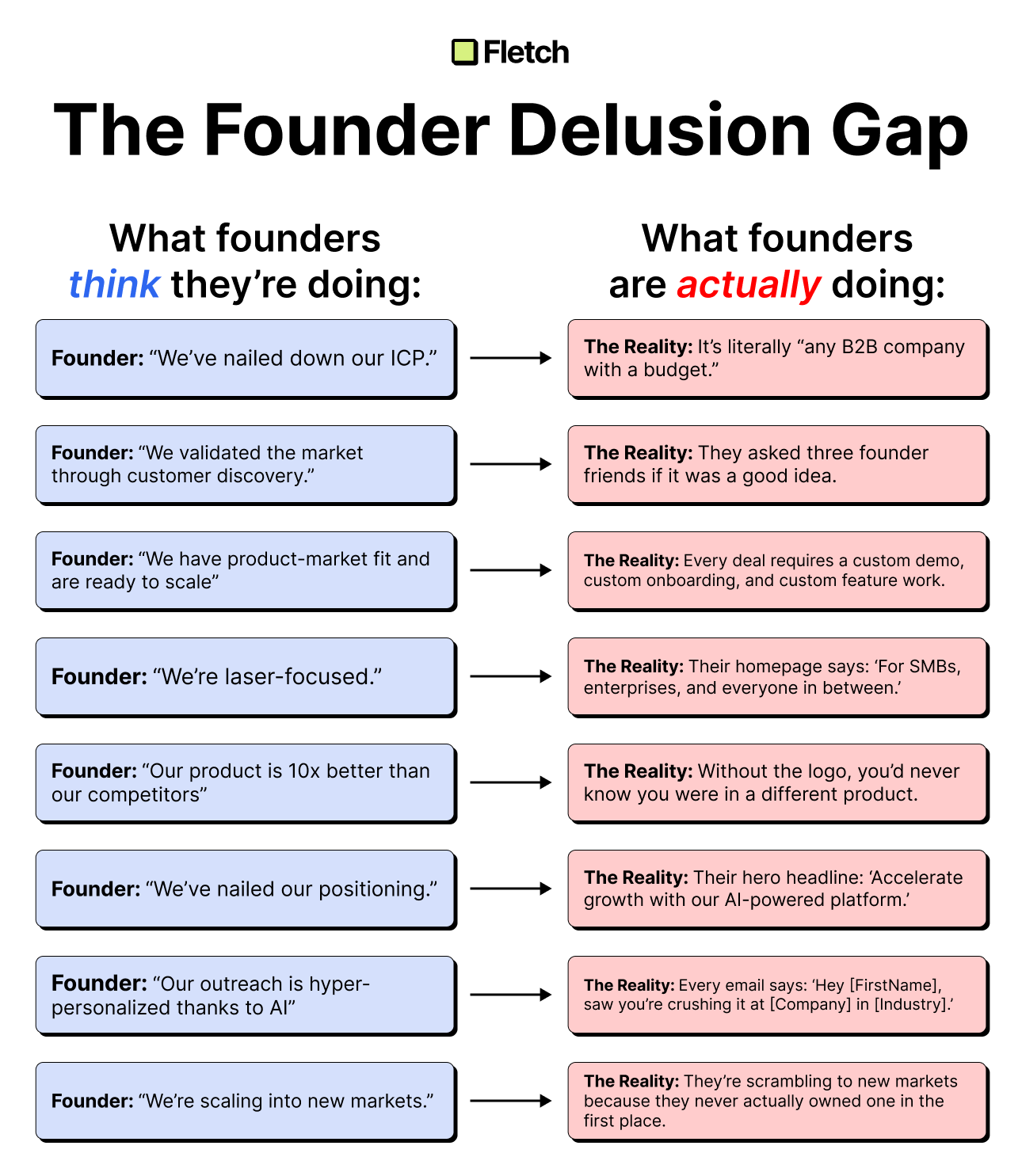4 Stages to Creating a Webpage


Creating a webpage takes 4️⃣ stages
↳ and most people skip stage 1 😬
- -----------
Stage 1 — Product Marketing
The goal:
↳ answering three fundamental questions ⬇️
What you say
(aka "messaging" 💬)
→ i.e. which features, capabilities, and benefits you share
...and which you DON'T
Why you say it
(aka "positioning" 🗺️)
→ i.e. strategically choosing to tell a story that positions your product
→ this also includes determining the overall flow of the page
(choosing which sections to include/not include, their order, etc.)
Who you say it to
("go-to-market strategy" ✉️)
→ i.e. how are we going to use this page? And who is actually going to see it?
- -----------
Stage 2 — Copywriting
The goal:
↳ determining HOW you communicate the message.
For startups, this should be more focused on CLARITY of language...
...rather than CLEVERNESS.
For more developed companies, this is where brand style/guidelines come in.
- -----------
Stage 3 — Design
The goal:
↳ visually representing this message in a way that strengthens the positioning of the product and/or the brand
→ i.e. fonts, colors, logos, illustrations, animations, interactions, pictures, etc.
- -----------
Stage 4 — Conversion Rate Optimization
The goal:
↳ using actual visitor data to improve your website over time
→ ongoing user research and analysis, A/B testing, usability testing, etc.
- -----------
You need all four stages for a powerful page.
and I focus 95% of our effort with startups on the first stage — but also venture into the copywriting stage to help deliver a useable wireframe that founders can pass to their web developer (which may or not be themselves in the early stages).
Here's an example using Kinetic, an awesome tool for strengthening Slack communities led by founder "Community Kris" (aka Kris Eul).

Ben Wilentz
Founder, Stealth Startup





